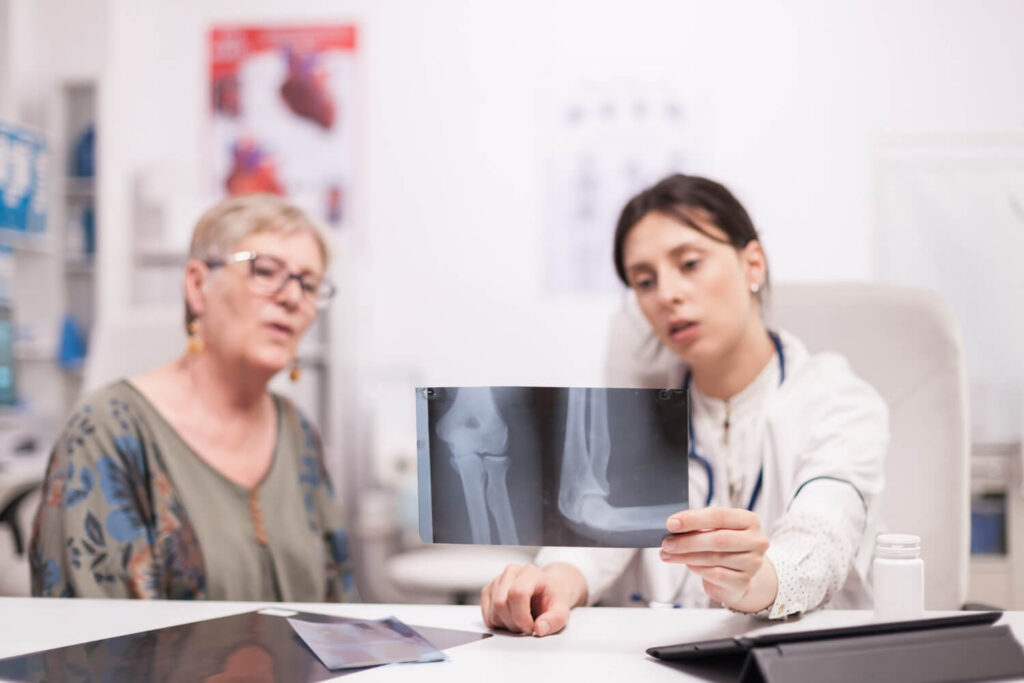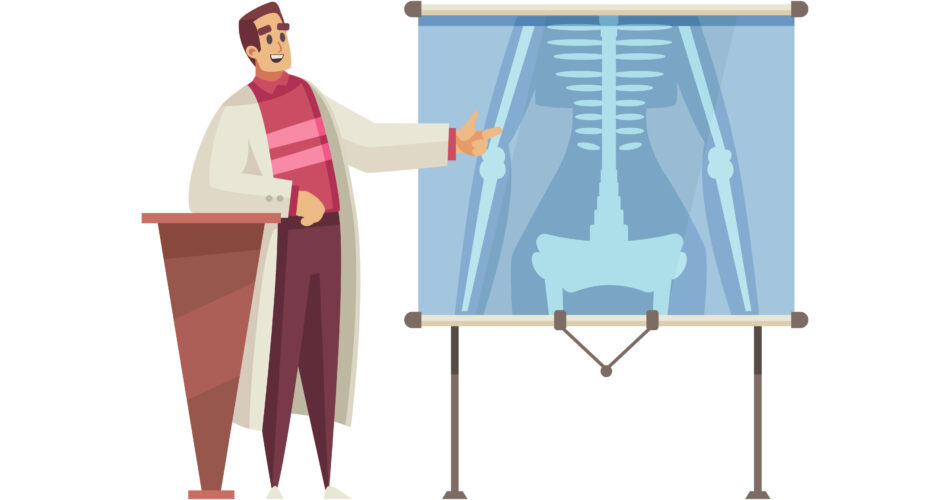When it comes to bone health, suffering from osteoporosis commonly involves bone loss. Due to lack of minerals, the ideal health of the bone decreases, making it more brittle than usual. Thus, resulting in a bone fracture, which can be triggered easily such as when coughing. With the complex nature of this bone condition, it is a must for individuals to know and understand the risk of osteoporosis and potential treatments.
Having such knowledge can help them manage the illness better, which ensures prevention of fracture risk and other medical conditions. That’s why if you are one of those individuals diagnosed with bone loss problems, you probably don’t have enough calcium, vitamin D, and other minerals to keep their bones healthy. If that’s the case then this blog can help you out. Discover how to address this bone illness, at the same time, identify the best step to utilize for a better overall health. Let’s begin!
Understanding Osteoporosis and Bone Loss

What is Osteoporosis?
Osteoporosis is a condition that occurs when the body loses too much bone mass or fails to make enough new bone. This can result in weak and brittle bones that are prone to fractures. It is often referred to as a “silent disease” because it doesn’t usually cause symptoms until a fracture occurs.
The bone naturally breaks and reforms a new one throughout one’s life. That is the normal cycle, but when the time comes and the new formation can’t keep up with the brittle bones, that can be alarming. Bone loss or even the weakening of bones can affect the daily life of every individual. Thus, the importance of knowing when to seek help from a health expert is important.
Connection of Bone Loss and Osteoporosis
As mentioned, bone loss is a natural process that occurs as part of the bone remodeling cycle. It involves the removal of old bone by cells called osteoclasts and the formation of new bone by cells called osteoblasts. When the rate of bone resorption exceeds the rate of bone formation, it can lead to a decrease in bone mass and strength, ultimately resulting in osteoporosis.
Unfortunately, this case is pretty common for adult patients such as postmenopausal women. They have the tendency to develop such conditions due to the lack of newly formed healthy bones. Without much calcium and other minerals, their bone health becomes more fragile as they age more. Thus, risking the development of osteoporosis when not addressed immediately.
Causes of Bone Loss

There are several factors that can contribute to bone loss, including vitamin D deficiency, family history of osteoporosis, rheumatoid arthritis, and tobacco use. These are serious factors that every patient must consider and take note of. Aside from that, it is also important to understand how these causes can influence the body’s health and result in bone loss. Here’s how:
- Vitamin D deficiency can result in bone loss due to impairing the body’s ability to absorb calcium, a crucial mineral for bone strength.
- Family history of osteoporosis can increase the risk of developing the condition.
- Rheumatoid arthritis includes the body’s immune system mistakenly attacks the joints, causing inflammation and damage to surrounding tissues, including bones.
- Tobacco use has been linked to decreased bone density and increased risk of fractures.
Even though these causes can greatly affect bone health, patients can also utilize these factors into reaching a potential goal on how to be healthy again. In short, they can improve their condition through seeking treatments and avoiding the progression of these factors.
For instance, as an osteoporosis patient, identifying whether or not you have a family history of this condition can help you as a patient. If you know you have the potential to develop such conditions, choosing healthier choices in life can help. That includes addressing the vitamin d deficiency problem and effects of prolonged usage of tobacco.
Nevertheless, it is still imperative to be proactive in one’s health no matter what kind of health threat it is. So, it is highly encouraged to seek immediate help for a healthier body.
Recognizing the Signs and Symptoms of Bone Loss
Bone loss does not typically cause symptoms until a fracture occurs. However, back pain, bone pain, and fractures can be signs of advanced bone loss. Severe bone loss can lead to debilitating symptoms such as hip fractures, weak bones, and increased risk of fractures. It is important to address bone loss early on to prevent the progression of the condition, leading to other complications related to osteoporosis.

Common Signs of Osteoporosis
- increased back pain
- height loss
- poor posture
- fractures occurring with minimal trauma
Early recognition of these symptoms can prompt intervention to prevent further bone loss and reduce the risk of fractures. Regular screenings and proactive measures can help individuals manage and improve their bone health effectively.
When to Seek Medical Advice

Suffering from potential bone loss due to osteoporosis is a serious condition that many adults face. It can hinder them from performing their physical activities, such as even bending can be a difficult task for them. With this effect, the best choice to follow is visiting a health expert that can assess bone health and receive the prescribed treatment.
A healthcare provider can evaluate your medical history, perform a physical examination, and order appropriate tests to assess your bone health. They can also provide guidance on lifestyle modifications and recommend medications if necessary. In most cases, rheumatologists and physical therapists are the type of doctors that will handle your current case. Their line of expertise allows them to treat the patient and offer quality care services to alleviate the condition.
Monitoring Bone Loss Through Consultation
Monitoring bone health is crucial for the prevention and management of osteoporosis. A bone density test, also known as a DEXA scan, can measure bone density and assess the risk of fractures. Regular consultations with a healthcare provider can help monitor bone health and provide guidance on maintaining strong bones.
Managing Osteoporosis and Bone Loss

Managing osteoporosis and bone loss involves a combination of lifestyle modifications and medical interventions. Adequate calcium intake, sufficient vitamin D levels, regular physical activity, and a healthy diet are important for maintaining bone health. In some cases, osteoporosis medications may be prescribed to slow down bone loss and increase bone density.
These treatments are commonly recommended by the health expert. Although, it is important to understand that treatment plans can differ depending on the current health status of the patient. In short, some patients may need higher dosage while others don’t. That’s why it is important to visit a doctor to fully assess your condition and to receive the appropriate treatment to prevent osteoporosis and bone loss.
Frequently Asked Questions
How to reverse bone loss caused by osteoporosis?
Reversing bone loss caused by osteoporosis involves a multifaceted approach. That involves having an adequate intake of calcium and vitamin D for bone remodeling. Aside from that, regular weight-bearing exercises help improve bone density and strength. When combined with a balanced diet rich in nutrients, bone health can surely be managed better than before.
In some cases, medications prescribed by a healthcare provider can also help to slow down bone loss and promote bone formation. It’s important to consult with a healthcare professional to develop a personalized treatment plan tailored to your specific needs and condition.
What kind of illnesses can cause bone loss aside from osteoporosis?
Aside from osteoporosis, other illnesses that can cause bone loss include hyperparathyroidism, multiple myeloma, rheumatoid arthritis, Cushing’s syndrome, and certain types of cancers. These conditions can lead to decreased bone density and increased risk of fractures if left untreated.
Seeking timely medical advice and proper management is crucial in addressing bone loss associated with these illnesses. Remember, early detection and treatment are vital for maintaining optimal bone health.
How to stop bone loss?
There are several strategies to help prevent or slow down the process. These include ensuring adequate calcium intake, enough vitamin D, engaging in regular weight-bearing and muscle-strengthening exercise, and maintaining a healthy lifestyle. Calcium supplements and vitamin D supplementation may be recommended if dietary intake is insufficient. It is important to consult with a healthcare provider for personalized recommendations.
Final Takeaway
Preventing osteoporosis is crucial for maintaining bone health and ensuring bone loss can be prevented. When bone loss occurs, it can result in significant loss in terms of physical activity. Thus, leaving the patient in constant worry and cautious just to avoid fractures.
Seeking medical advice when needed is an important step that individuals must learn to mitigate the risk of fractures and maintain strong bones. Regular monitoring of bone density through consultations with healthcare providers can aid in early detection and intervention. Remember, taking simple steps towards bone health can significantly impact overall wellbeing.



